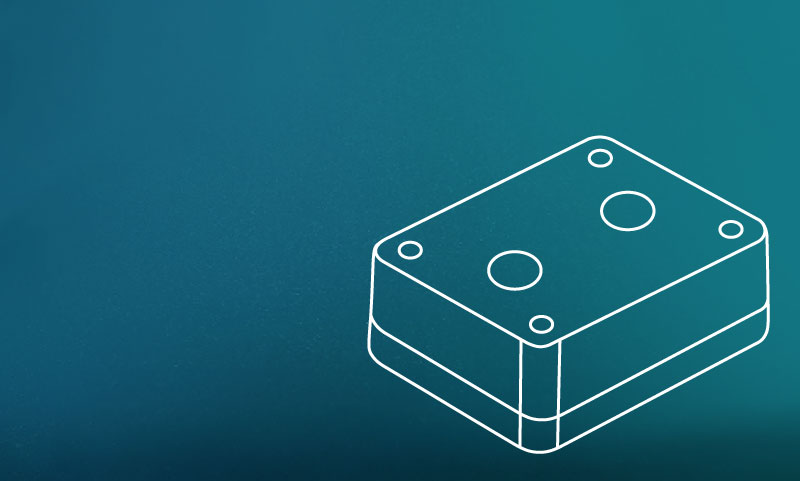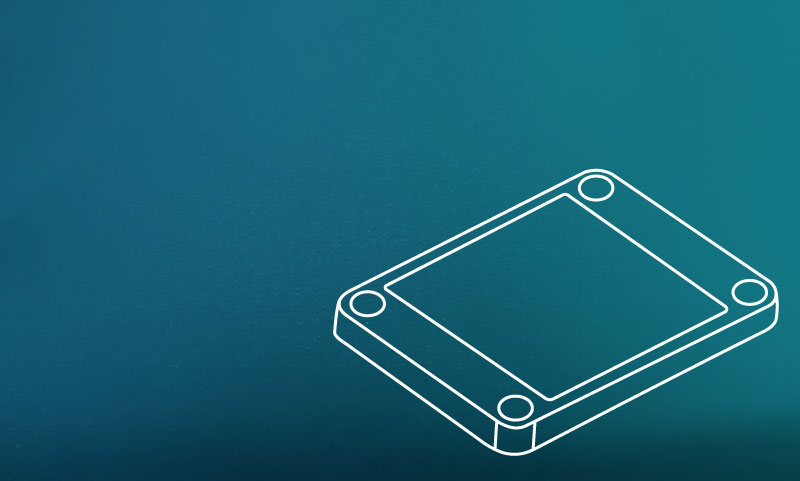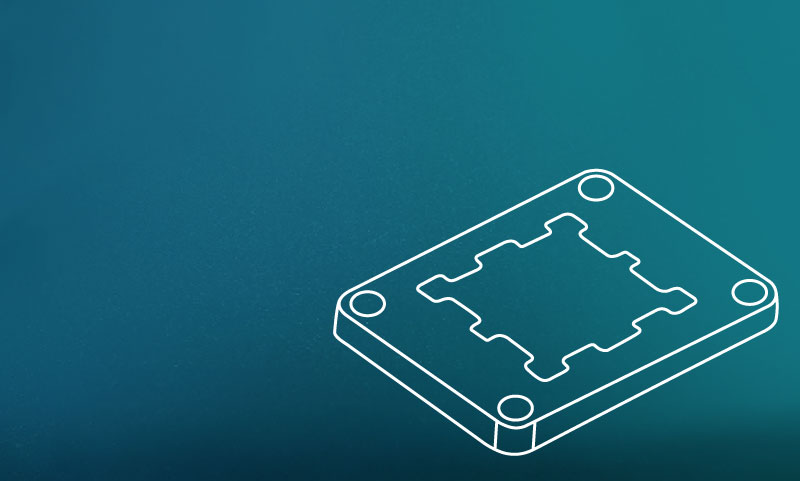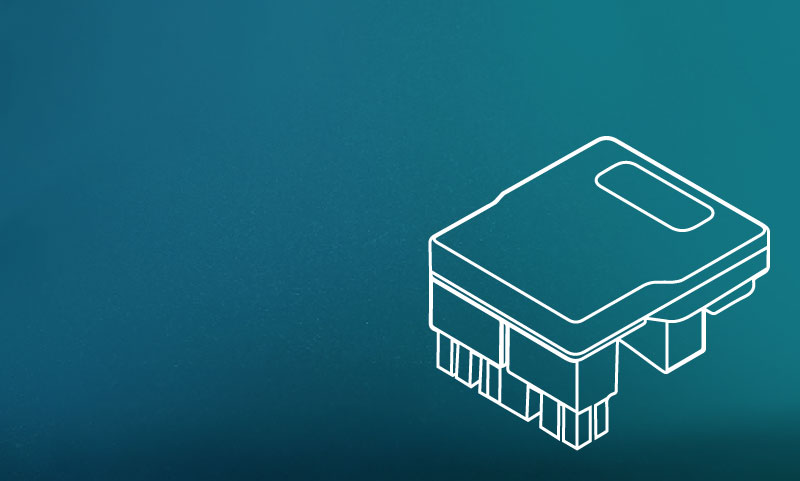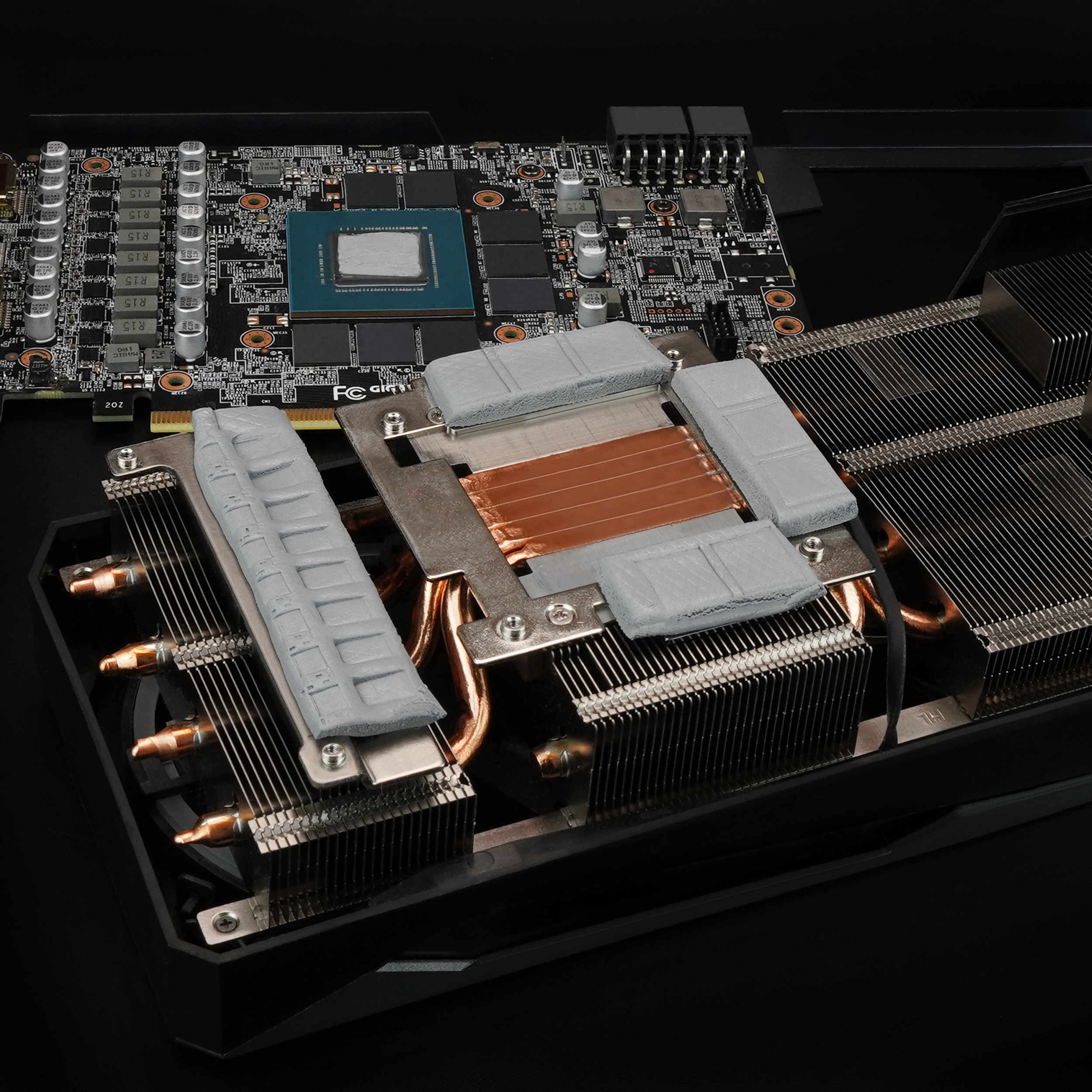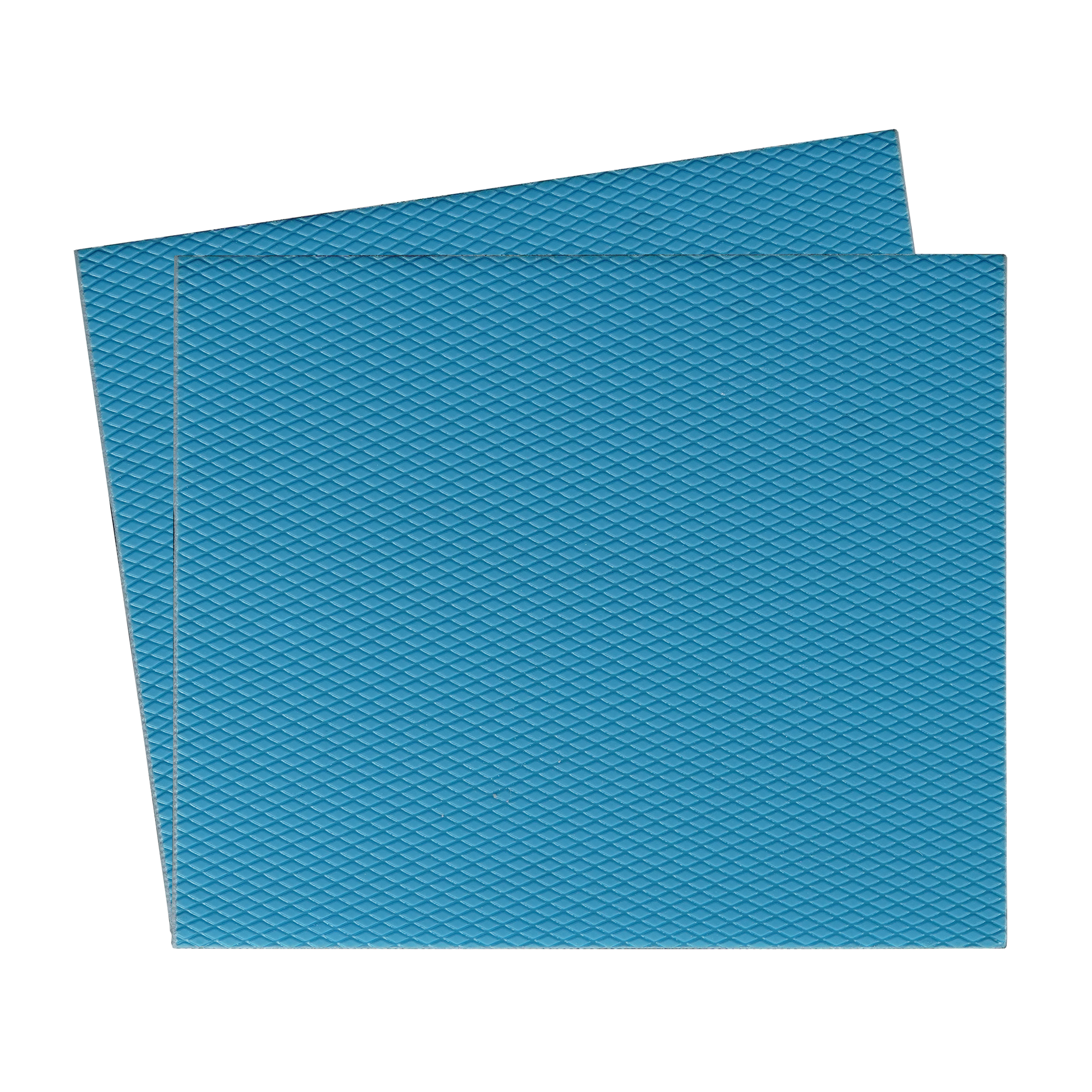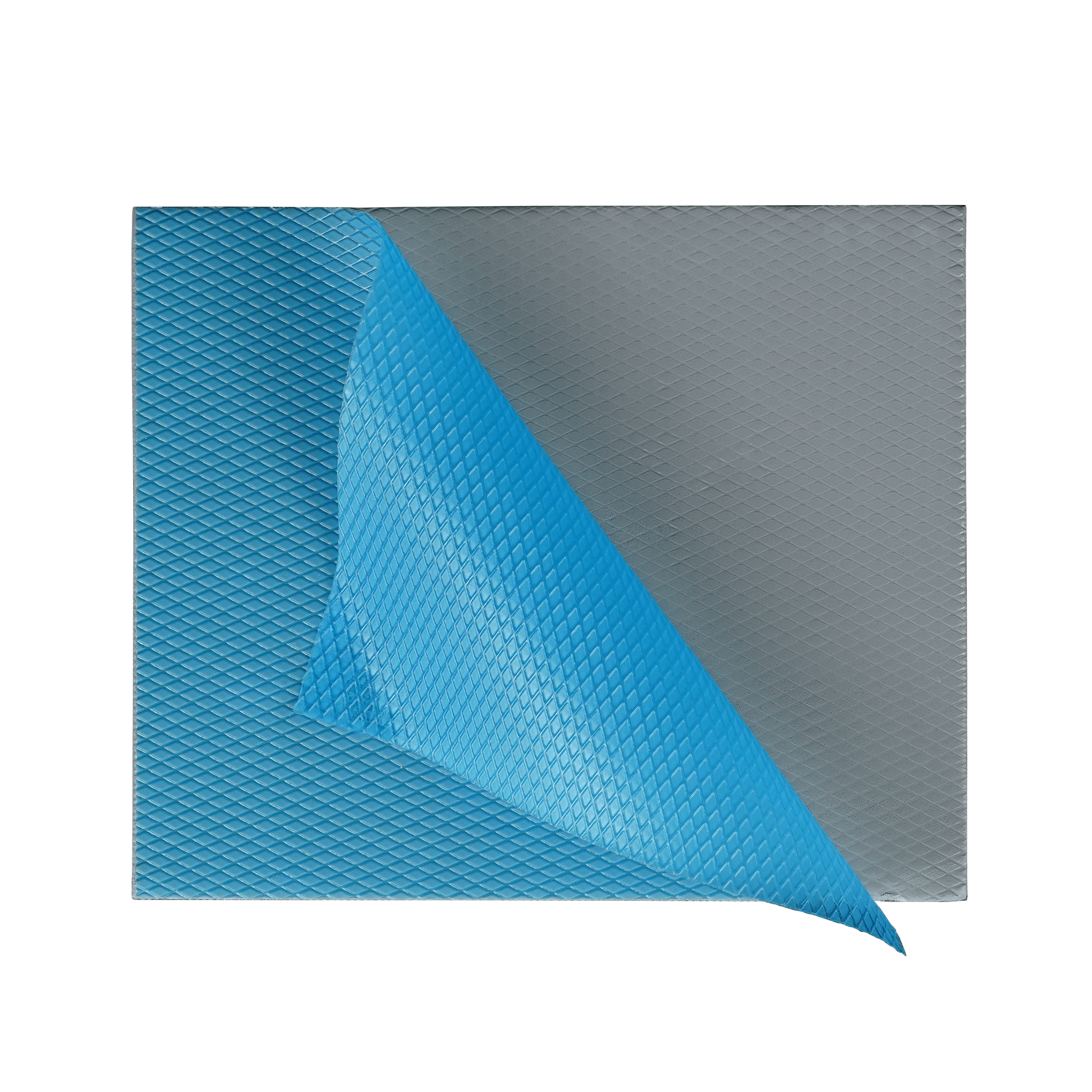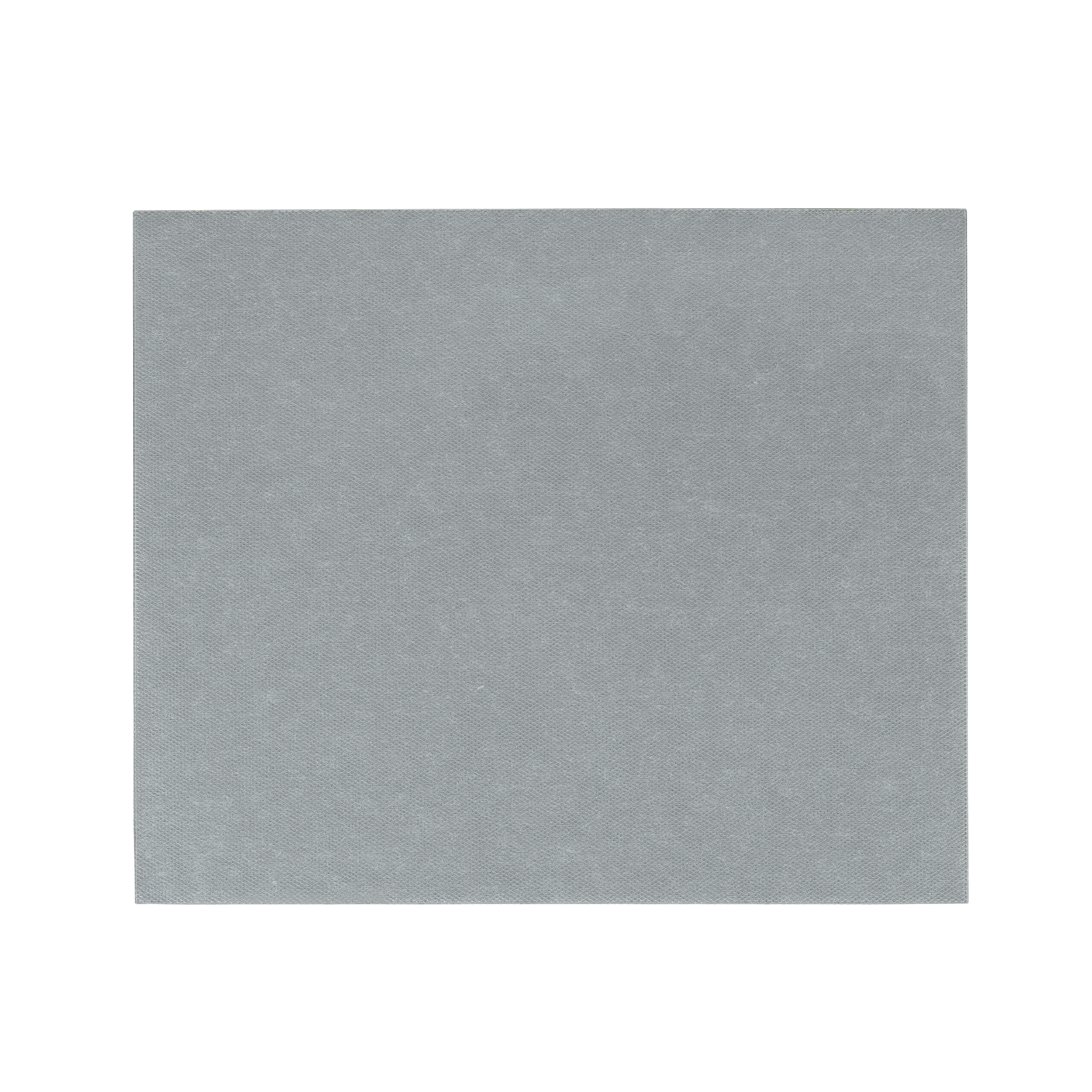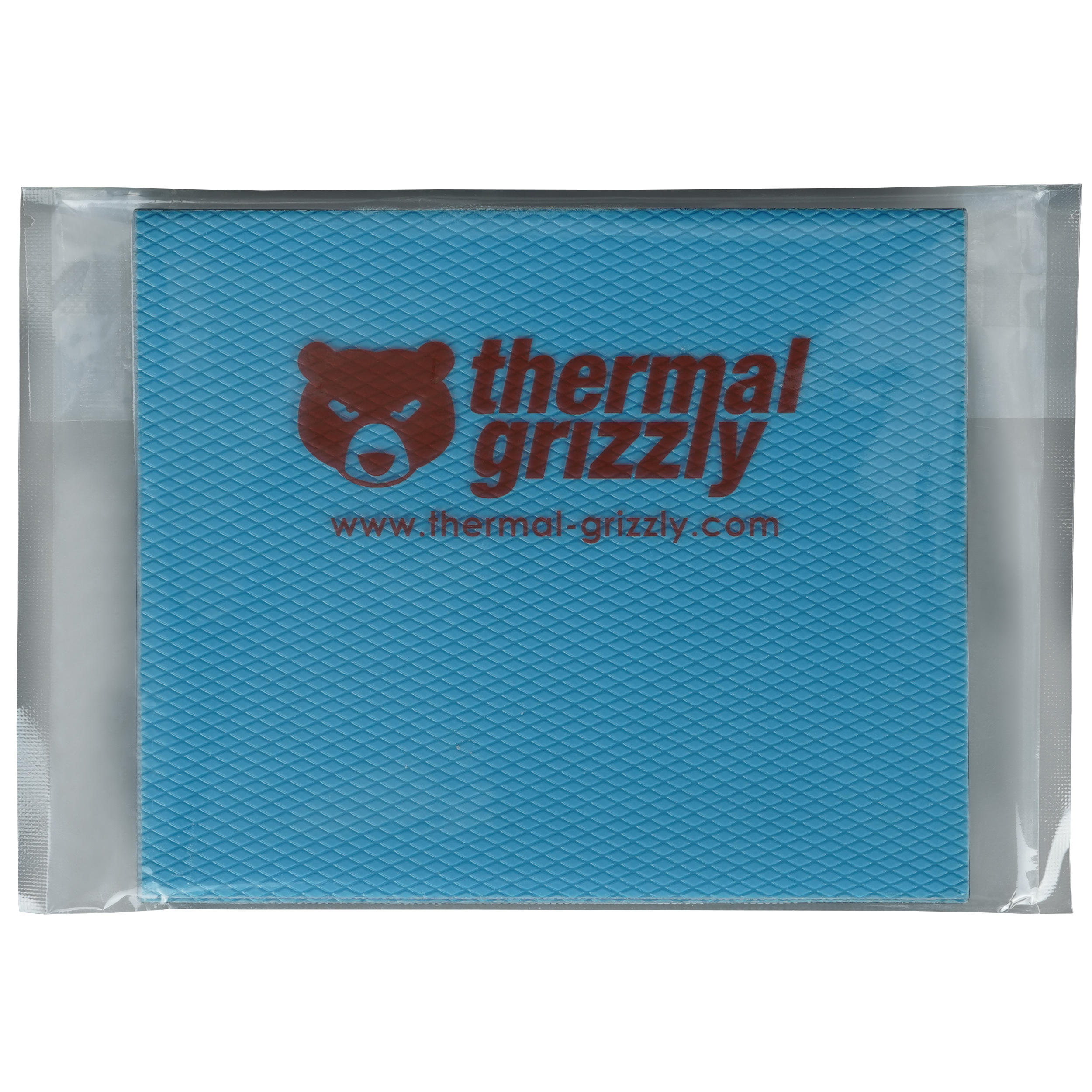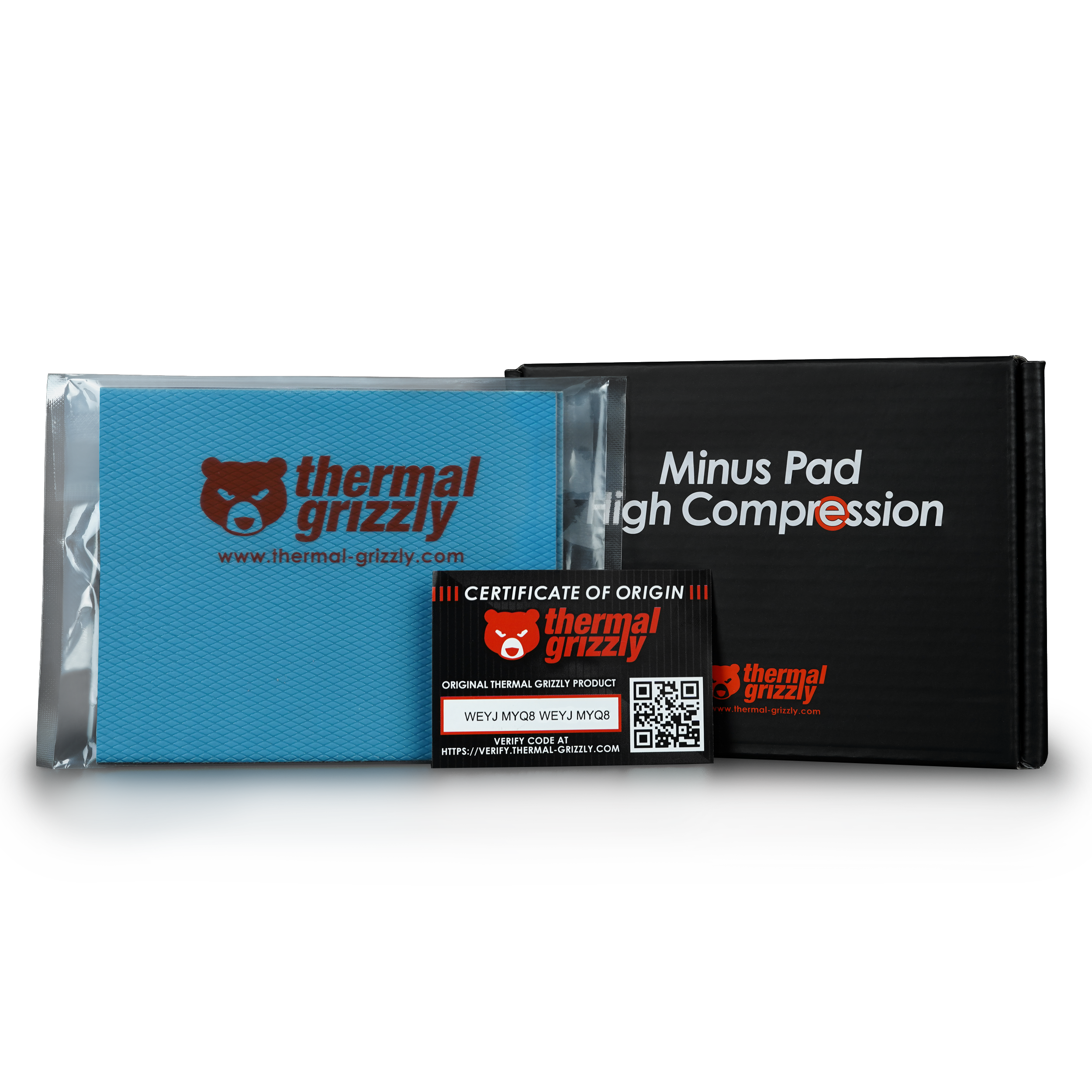MINUS PAD High Compression
The thermal pads of the TG Minus Pad High Compression series feature exceptionally high compressibility. This makes them especially versatile in practical use, as a single pad can bridge varying height differences simultaneously. This is particularly useful when modifying graphics cards with a GPU water cooler or when replacing the thermal pads of a GPU cooler. A TG Minus Pad High Compression (HC Pad) can be applied to different components—such as VRAM, voltage regulators, and other contact surfaces—within the same setup.
In general, High Compression pads are ideal in situations where the exact required thickness of thermal pads is unknown. In such cases, the thickness of the existing pads is measured and replaced with slightly thicker High Compression pads. It is particularly noteworthy that these pads not only maintain their thermal conductivity under high compression, but that the thermal conductivity can even increase with higher contact pressure.
- Very high compressibility
- Excellent thermal conductivity, even under heavy compression
- Adapts well to height tolerances
- Electrically non-conductive
- Highly versatile in application
- Easy to handle
How to select the Appropriate Minus Pad High Compression
The thermal pads from the TG Minus Pad High Compression series should always be chosen with a thickness slightly greater than the measured height difference. At the same time, care must be taken not to use pads that are too thick. It must always be ensured that—on a graphics card, for instance—direct contact between the GPU chip and the corresponding cooler surface is maintained.
Based on the measured height of the thickest pad that is factory-installed on the cooler, an HC Pad should be selected that is at least one step thicker. For example, if the stock thermal pad is 2.4 mm thick, a 3 mm thick HC Pad should be used. As previously mentioned, it is important to verify that all critical components still maintain proper contact. An HC Pad should be as thin as possible, but as thick as necessary.
Compressing the pads requires a corresponding amount of contact pressure. In the case of GPU coolers (whether standard air coolers or GPU water blocks), there are usually a relatively high number of pressure points via screws in relation to the surface area, which generally ensures sufficient pressure. In contrast, laptops often only use four screws to secure the chassis, meaning there is minimal contact pressure in the center due to the large area and few pressure points. Therefore, thicker HC Pads should not be used in laptops.
It is important to note that while TG Minus Pad High Compression pads are highly compressible, they are still subject to physical limitations. Excessive contact pressure can damage components. Additionally, when force is applied on the Z-axis (height), the pads will expand in the X and Y directions. Internal testing has shown that varying height differences can be seamlessly compensated—as long as sufficient contact pressure is applied and there is enough space for the HC Pads to expand.






